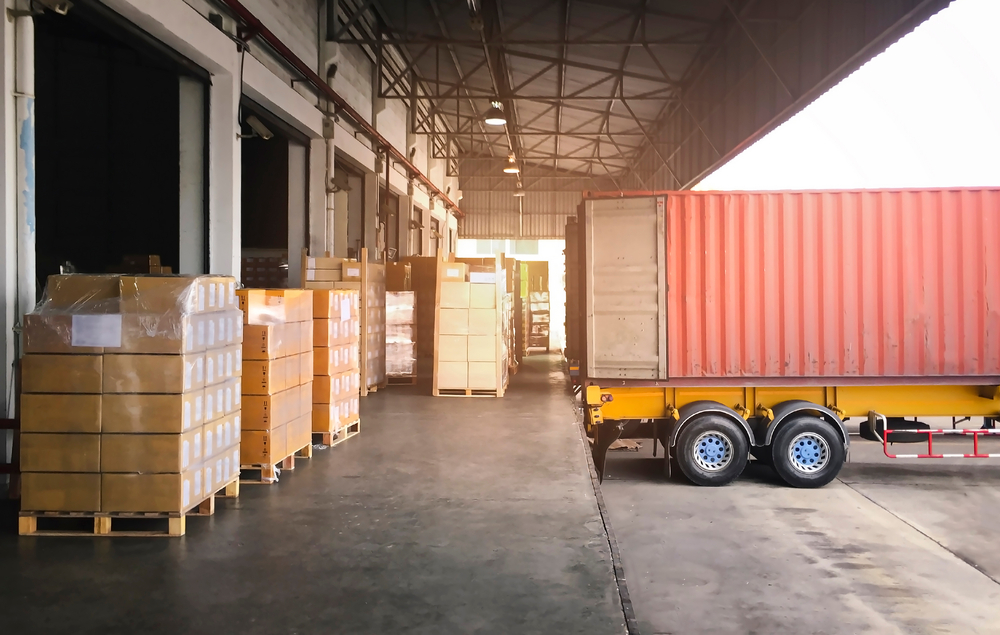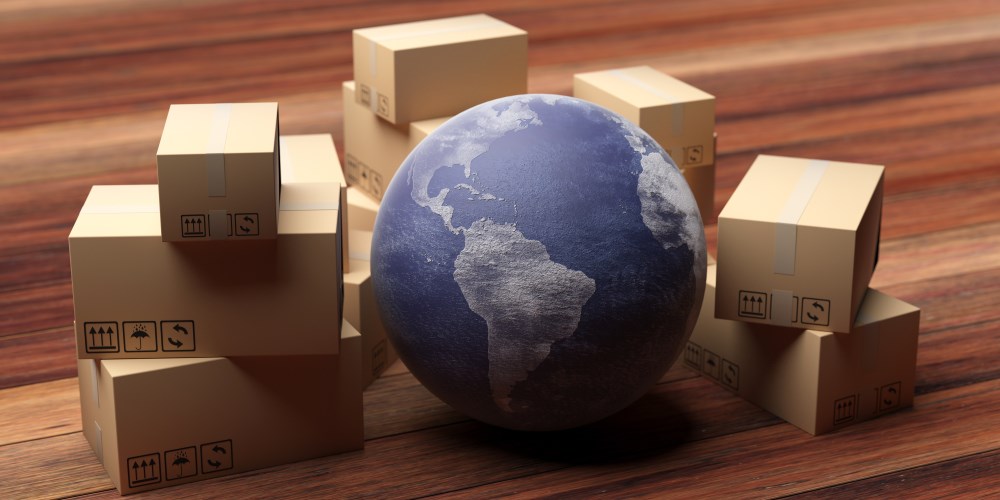Logistics is the backbone of any successful business, ensuring that products reach every customer seamlessly and on time. At its core lie two important components: warehousing and distribution. When warehousing and distribution operations are aligned, businesses can effectively manage inventory levels, streamline order fulfillment, and meet customer demands with perfect timing. However, when these functions operate independently or in silos, it can lead to many serious problems.
Understanding Warehousing and Distribution
Warehousing and distribution are two fundamental components of the logistics process, each playing a crucial role in ensuring the efficient movement of goods from production to consumption.
Warehousing serves as the backbone of the supply chain, providing the infrastructure necessary for storing, managing, and safeguarding inventory. They are strategically located facilities equipped with storage systems, material handling equipment, and inventory management technologies. A warehouse serves as temporary holding space for goods awaiting distribution, allowing businesses to maintain optimal stock levels and meet customer demand.
In essence, warehousing functions as the intermediary between production and consumption, acting as a buffer to balance supply and demand fluctuations. Within warehouses, goods are received, inspected, sorted, stored, and prepared for distribution. Inventory accuracy, organization, and security are imperative in warehouse operations to ensure efficient retrieval and timely order fulfillment.
Distribution, on the other hand, focuses on the movement of goods from the warehouse to the end customer. It encompasses various activities, including order processing, transportation management, and last-mile delivery. Distribution centers serve as hubs for consolidating and dispatching goods to their final destinations, whether it’s retail stores, wholesalers, or directly to consumers’ doorsteps.
Effective distribution relies on strategic planning, efficient routing, and coordination between multiple stakeholders, including carriers, logistics providers, and customers. Timely delivery, accurate tracking, and responsive customer service are essential elements of successful distribution operations, enabling businesses to fulfill orders promptly and meet customer expectations.
Together, distribution and warehousing form the backbone of the logistics network, facilitating the flawless flow of goods throughout the supply chain. By understanding the roles and functions of these components, businesses can optimize their logistics operations, minimize costs, and deliver superior customer experiences.
Benefits of Integrating Warehousing and Distribution
Integrating warehousing and distribution services offers a multitude of benefits that can positively impact the efficiency and effectiveness of logistics operations. Some key benefits of integration include:
1. Improved Inventory Management
Integration of warehousing and distribution services enhances inventory management by providing real-time visibility and control over stock levels. This enables businesses to minimize stockouts, optimize inventory turnover, and improve order fulfillment efficiency. With synchronized systems, businesses can accurately track inventory, streamline replenishment, and meet customer demand promptly, leading to higher customer satisfaction and reduced carrying costs.
2. Better Order Fulfillment
Integrated distribution and warehousing management enables faster and more accurate order processing and fulfillment. By aligning warehousing and distribution operations, businesses can expedite order picking, packing, and shipping, reducing order cycle times and improving order accuracy. This leads to faster delivery times and higher customer satisfaction levels, ultimately driving repeat business and customer loyalty.
3. Optimized Transportation
Integration allows for better coordination of transportation activities, leading to more efficient and cost-effective logistics operations. By consolidating shipments, optimizing routes, and reducing empty miles, businesses can minimize transportation costs and improve overall fleet efficiency. Integration also enables better communication between warehousing and transportation teams, allowing for smoother handoffs and reduced transit times.
4. Reduced Operating Costs
By eliminating redundancies and inefficiencies in warehousing and distribution processes, integration can help reduce overall operating costs. Streamlined workflows, optimized resource utilization, and reduced inventory holding costs contribute to lower operational expenses. Additionally, integration enables better resource allocation and capacity planning, leading to improved resource efficiency and cost savings.
5. Enhanced Customer Satisfaction
Integration ultimately leads to a better customer experience. Faster order processing and fulfillment, accurate order tracking, and on-time delivery all contribute to higher levels of customer satisfaction. By delivering products quickly and reliably, businesses can build trust and loyalty with their customers, leading to positive word-of-mouth recommendations and repeat business.
6. Agility and Adaptability
Integrated warehousing and distribution management enable businesses to respond quickly to changes in demand, market conditions, or supply chain disruptions. By having a flexible and adaptable logistics network, businesses can adjust inventory levels, reroute shipments, and optimize resources as needed to meet evolving customer needs and market dynamics.
Challenges of Separate Warehousing and Distribution
When warehousing and distribution logistics operate in isolation, several challenges can arise, impacting the efficiency and effectiveness of the whole business. The challenges highlight the importance of integrating these two operations to overcome potential pitfalls and optimize the supply chain. Some of the potential challenges include:

1. Inventory Discrepancies
Separation between warehousing and distribution can lead to discrepancies in inventory records and stock levels. Without real-time synchronization, inventory inaccuracies may occur, resulting in stockouts, overstocking, and fulfillment errors that affect customer satisfaction and operational performance.
2. Delayed Order Processing
Disjointed processes can cause delays in order processing and fulfillment. Lack of communication and coordination between warehousing and distribution teams may result in inefficient workflows, longer lead times, and missed delivery deadlines, negatively impacting customer satisfaction and retention.
3. Inefficient Resource Utilization
Separating warehousing and distribution activities may lead to underutilization of resources and redundant processes. Without integrated planning and coordination, businesses may struggle to optimize warehouse space, transportation routes, and labor allocation, leading to increased costs and decreased productivity.
4. Poor Customer Experience
The lack of integration between warehousing and distribution processes can result in a bad customer experience. Delays, errors, and inconsistencies in order fulfillment and delivery may lead to customer complaints, negative reviews, and loss of business, undermining brand reputation and competitiveness.
5. Increased Operating Costs
Operating separate warehousing and distribution facilities can lead to higher operating costs due to duplicative processes, inefficient resource allocation, and increased transportation expenses. Without integration, businesses may struggle to achieve economies of scale and cost savings, impacting profitability and sustainability.
Strategies for Effective Integration
Integrating warehousing and distribution logistics requires a strategic approach that addresses both operational and technological aspects. By implementing the following strategies, businesses can streamline their logistics operations and achieve better integration:
1. Centralized Data Management
Establish a centralized system for managing inventory data, order information, and logistics workflows. This allows for real-time visibility and communication between warehousing and distribution teams, ensuring synchronized operations and accurate decision-making.
2. Cross-Functional Collaboration
Foster collaboration between warehousing, distribution, and other relevant departments such as procurement, sales, and customer service. Cross-functional teams can work together to align processes, share insights, and address challenges collaboratively, driving integration and continuous improvement.
3. Technology Adoption
Invest in integrated technology solutions such as Warehouse Management Systems (WMS) and Transportation Management Systems (TMS) that facilitate seamless data exchange and workflow automation. These systems enable efficient order processing, inventory tracking, and transportation planning, optimizing logistics operations and enhancing integration.
4. Process Standardization
Standardize warehousing and distribution processes to ensure consistency and efficiency across facilities and locations. Develop standardized operating procedures (SOPs), workflows, and performance metrics that align with organizational goals and objectives. This promotes uniformity and clarity in operations, facilitating integration and scalability.
5. Performance Monitoring and Analysis
Implement performance monitoring tools and metrics to track key performance indicators (KPIs) related to warehousing and distribution operations. Analyze data regularly to identify trends, bottlenecks, and areas for improvement. By monitoring performance metrics such as order cycle times, inventory accuracy, and on-time delivery rates, businesses can identify opportunities to optimize processes and enhance integration.
6. Continuous Improvement
Embrace a culture of continuous improvement and innovation within the organization. Encourage feedback, experimentation, and learning from both successes and failures. By continuously seeking ways to enhance efficiency, effectiveness, and customer satisfaction, businesses can stay ahead of the curve and drive ongoing integration and optimization.
7. 3PL Warehousing and Distribution
Consider outsourcing warehousing and distribution functions to third party logistics (3PL) providers. 3PLs offer expertise, resources, and infrastructure to manage warehousing and distribution operations efficiently. By leveraging the capabilities of 3PL warehousing and distribution providers, businesses can access scalable solutions, reduce overhead costs, and focus on core competencies, thereby enhancing integration and flexibility in logistics operations.
Conclusion
From optimizing inventory management to improving order fulfillment efficiency, finding the right warehousing and distribution solutions for your business offers a myriad of advantages. Businesses can achieve greater visibility, accuracy, and responsiveness across the supply chain, leading to enhanced customer satisfaction, reduced operating costs, and increased profitability. Elite Anywhere is a trusted warehousing and distribution supplier that can perfect operations for your business, reduce costs, and enhance customer satisfaction.
About Us

More than just a white glove delivery company: we specialize in receiving, warehousing, shipping, and national white glove delivery & installation services.
Categories
Related posts
Ready to get started?

Experience new growth opportunities and elevate your business to the next level with our unparalleled white-glove delivery service and extensive coverage. By partnering with us, you can tap into previously undiscovered potential that will drive you closer to your goals.

Latest blog posts
From Arrival to Storage: The Warehouse Receiving Process
From Arrival to Storage: The Warehouse Receiving Process At the forefront of the numerous operations within a warehouse is the often-overlooked but crucial warehouse receiving proc
Introducing the Elite Anywhere International Moving and Storage Services
We will walk you through our international moving and storage services, showing you why we’re the best partner for a smooth move.
Flex Warehouse Innovations: Redefining Storage Dynamics
Flex Warehouse Innovations: Redefining Storage Dynamics As businesses and individuals seek greater flexibility, the demand for workspaces that can seamlessly adapt to diverse needs

A complete end-to-end logistics company. From receiving to last-mile delivery and everything in between, our staff delivers a true white glove experience with meticulous care and attention to detail. Need something pickup up, crated, and delivered - anywhere in the world? Let's get started!





